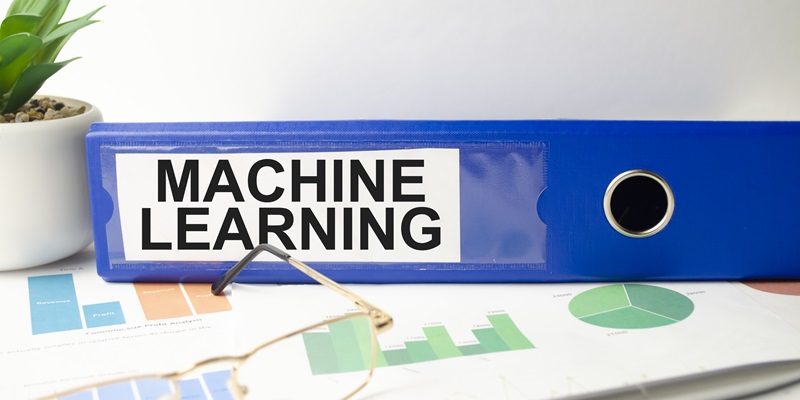Machine learning has emerged as a powerful tool with immense potential to revolutionize industries such as healthcare, finance, transportation, and more. Therefore, it is essential for anyone interested in these fields to understand the basic concepts of machine learning. In this article, we will explore the fundamental concepts and their applications in transforming industries.
The role of data
Data acts as the foundation upon which machine learning models are built and predictions are made. The quality and relevance of the data greatly impact the accuracy and reliability of the models. Therefore, it is crucial to have a solid understanding of how data plays a pivotal role in machine learning.
Data preprocessing
Data preprocessing is a critical step in improving the accuracy and reliability of machine learning models. It involves transforming raw data into a format that is suitable for analysis. By cleaning, formatting, and scaling the data, we can eliminate outliers, reduce noise, handle missing values, and normalize the features. Various techniques such as data cleaning, feature scaling, and handling missing values are employed in the data preprocessing phase.
Supervised Learning
Supervised learning is a type of machine learning where each example in the dataset is labeled with its correct outcome. The model learns from this labeled data to make predictions on new, unseen data. Classification and regression are common tasks associated with supervised learning. Applications of supervised learning range from image recognition to medical diagnosis, and from fraud detection to sentiment analysis.
Unsupervised learning
Unlike supervised learning, unsupervised learning relies on “unlabeled data” to uncover patterns and structures within the data. It aims to extract meaningful insights without prior knowledge of the correct outcomes. Clustering and dimensionality reduction are commonly used techniques in unsupervised learning. It finds applications in customer segmentation, anomaly detection, and recommendation systems.
Neural networks
Neural networks are computational models that closely mimic the structure and functioning of the human brain. They excel at recognizing complex patterns and extracting meaningful insights from data. With multiple layers of interconnected nodes, neural networks can process vast amounts of data to make accurate predictions. Applications of neural networks include image recognition, natural language processing, and speech recognition.
Deep Learning
Deep learning takes neural networks to the next level by training them with progressively updated layers. Deep learning eliminates the need for explicit feature engineering, as the model can learn hierarchical representations directly from the raw data. This allows for automatic feature extraction and improved performance on complex tasks such as image and speech recognition. Deep learning has made significant contributions to areas like autonomous driving, drug discovery, and cancer diagnosis.
Model evaluation
Evaluating the performance of machine learning models is crucial for assessing their accuracy and reliability. Concepts like overfitting, underfitting, cross-validation, and various evaluation metrics are used to ensure robustness. Overfitting occurs when a model performs exceptionally well on the training data but fails to generalize to unseen data, while underfitting refers to a model that fails to capture the underlying patterns. Cross-validation helps estimate the model’s performance on unseen data, and metrics such as accuracy, precision, recall, and F1-score provide insights into the effectiveness of the model.
Feature Extraction and Engineering
In many domains, extracting relevant attributes or characteristics from data is crucial for achieving accurate predictions. Feature extraction involves transforming raw data into a more manageable representation that captures the underlying patterns. Feature engineering, on the other hand, involves creating new features based on domain knowledge or specific requirements. These techniques play a crucial role in areas such as natural language processing, computer vision, fraud detection, and healthcare.
Recommendation systems
Recommendation systems analyze vast amounts of data to accurately predict user preferences. By employing techniques like collaborative filtering and content-based filtering, these systems provide personalized recommendations to users, enhancing their overall experience. Recommendation systems are widely used in e-commerce platforms, media streaming services, and social media platforms to suggest products, movies, and friends to users.
Anomaly detection
Anomaly detection algorithms play a vital role in identifying deviations from expected patterns and behaviors. By analyzing data and detecting anomalies, these algorithms enhance security measures across various industries. Anomaly detection finds applications in fraud detection, network intrusion detection, equipment failure prediction, and quality control.
In conclusion, understanding basic machine learning concepts is essential for anyone interested in the field. Machine learning holds immense potential to transform industries such as healthcare, finance, transportation, and more. By leveraging data, preprocessing techniques, supervised and unsupervised learning, neural networks, deep learning, model evaluation, feature extraction, recommendation systems, and anomaly detection, we can unlock valuable insights and drive innovation in various sectors. As machine learning continues to evolve, it is crucial to stay updated with emerging technologies and practices to harness its full potential.

